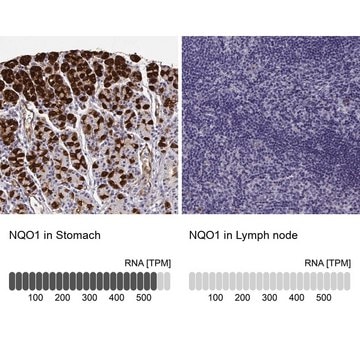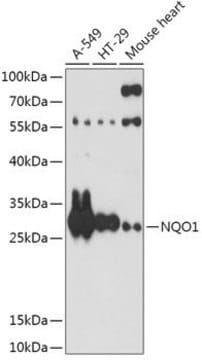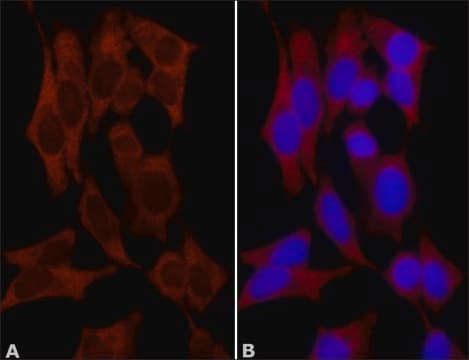SRP6539
NQO1 human
recombinant, expressed in E. coli, ≥90% (SDS-PAGE)
Synonyme(s) :
Azoreductase, DT-Diaphorase (DTD), Dioxin-inducible 1, Disphorase-4 (DIA4), Menadione Reductase, NAD(P)H Dehydrogenase (Quinine) 1 (NQO1), NAD(P)H Quinone Oxireductase, Phylloquinone Reductase, Quinone Oxidoreductase 1, Quinone Reductase 1 (QR1)
About This Item
Produits recommandés
Source biologique
human
Produit recombinant
expressed in E. coli
Pureté
≥90% (SDS-PAGE)
Forme
liquid
Poids mol.
~30 kDa (Human NQO1 aa 1-274 is fused at the C-terminus to a His-tag.)
Conditionnement
pkg of 10 and 50 μg
Impuretés
<0.1 EU/μg endotoxin (LAL test)
Numéro d'accès UniProt
Conditions d'expédition
wet ice
Température de stockage
−20°C
Informations sur le gène
human ... NQO1(1728)
Description générale
Actions biochimiques/physiologiques
Forme physique
Mention d'avertissement
Warning
Mentions de danger
Conseils de prudence
Classification des risques
Eye Irrit. 2
Code de la classe de stockage
10 - Combustible liquids
Classe de danger pour l'eau (WGK)
WGK 1
Point d'éclair (°F)
Not applicable
Point d'éclair (°C)
Not applicable
Certificats d'analyse (COA)
Recherchez un Certificats d'analyse (COA) en saisissant le numéro de lot du produit. Les numéros de lot figurent sur l'étiquette du produit après les mots "Lot" ou "Batch".
Déjà en possession de ce produit ?
Retrouvez la documentation relative aux produits que vous avez récemment achetés dans la Bibliothèque de documents.
Notre équipe de scientifiques dispose d'une expérience dans tous les secteurs de la recherche, notamment en sciences de la vie, science des matériaux, synthèse chimique, chromatographie, analyse et dans de nombreux autres domaines..
Contacter notre Service technique




![Nitrate Reductase (NAD[P]H) from Aspergillus niger lyophilized powder, ≥300 units/g solid](/deepweb/assets/sigmaaldrich/product/images/309/282/2a67ae4d-ca55-4f0b-96ec-34748ff8a21e/640/2a67ae4d-ca55-4f0b-96ec-34748ff8a21e.jpg)




